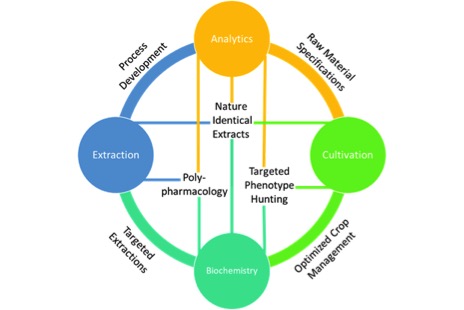In a previous article I discussed the elephant in the room for clients of laboratory services- the possibility of errors, inaccurate testing and dishonesty.
Now, I will explain how the current “smoke and mirrors” of distillation claims are impacting the cannabis industry in the recreational and medical areas. We have all heard the saying, “ignorance is bliss.” But, the ignorance of how distillation really works is creating misinformation and misleading consumers.
That is, just because a cannabis extract has been distilled, doesn’t mean it is safer.There have been reports of people claiming that “Distilled cannabis productsthat are Category 2 distillate are pesticide free and phosphate free, while Category 1 has pesticides and phosphates, but within acceptable limits”
The problem is that these claims of Category 1 and Category 2 cannot be proven just by saying they are distilled. Ignorance of the physical chemistry rules of distillation will lead to increased concentrations of pesticides and other organic contaminants in the supposedly purified cannabis distillate. That is, just because a cannabis extract has been distilled, doesn’t mean it is safer.
So, let’s look at a basic physical chemistry explanation of the cannabis distillation process.
- First off, you must have an extract to distill. This extract is produced by butane, carbon dioxide or ethanol extraction of cannabis botanical raw material. This extract is a tarry or waxy solid. It contains cannabinoids, terpenes and other botanical chemicals. It will also contain pesticides, organic chemicals and inorganic chemicals present in the raw material. The extraction process will concentrate all of these chemical compounds in the final extract.
- Now you are ready to distill the extract. The extract is transferred to the vacuum distillation vessel. Vacuum distillation is typically used so as to prevent the decomposition of the cannabinoid products by thermal reactions or oxidation. Under a vacuum, the cannabinoids turn into a vapor at a lower temperature and oxygen is limited.
- Part of the vacuum distillation apparatus is the distillation column. The dimensions of this column (length and width) along with the packing or design (theoretical plates) will determine the efficiency of distillation separation of each chemical compound. What this means is that the more theoretical plates in a column, the purer the chemical compound in the distillate. (e.g. Vigreux column = 2-5 theoretical plates, Oldershaw column = 10-15 plates, Sieve plate column = any number you can pay for).
- The temperature and vacuum controls must be adjustable and accurate for all parts of the distillation apparatus. Failure to control the temperature and vacuum on any part to the apparatus will lead to:
- Thermal destruction of the distillate
- Oxidation of the distillate
- Impure distillate
Now, you can see that a proper distillation apparatus is not something you throw together from a high school chemistry lab. But just having the proper equipment will not produce a pure cannabis product. The physical chemistry that takes place in any distillation is the percentage a chemical compound that occurs in the vapor phase compared to the percentage in liquid phase.So, how can you produce a cannabis distillate that is clean and pure?
For example, let’s look at whiskey distillation. In a simple pot still, alcohol is distilled over with some water to produce a mixture that is 25%-30% ethanol. Transferring this distillate to an additional series of pot stills concentrates this alcohol solution to a higher concentration of 85%-90% ethanol. So, each pot still is like a single theoretical plate in a distillation column.
But, if there are any chemical compounds that are soluble in the vapor produced, they will also be carried over with the vapor during distillation. This means that pesticides or other contaminants that are present in the cannabis extract can be carried over during distillation!
So, how can you produce a cannabis distillate that is clean and pure?
- Produce a cannabis extract that has lower concentrations of bad chemicals. Since a lot of the cannabis extracts available for distillation are coming from grey-black market cannabis, the chances of contamination are high. So, the first thing to do is to set up an extraction cleanup procedure.
- An example of this is to wash the raw extract to remove inorganic phosphates. Then recrystallize the washed extract to remove some of the pesticides.
- Make sure that the distillation apparatus is set up to have proper temperature and vacuum controls. This will limit production of cannabis decomposition products in the final distillate.
- Make sure your distillation apparatus has more than enough theoretical plates. This will make sure that your cannabis distillate has the purity needed.
- Finally, make sure that the staff that operates the cannabis distillation processes are well trained and have the experience and knowledge to understand their work.
Inexperienced or under-trained individuals will produce inferior and contaminated product. Additional information of extract cleanup and effective vacuum distillation can be obtained by contacting the author.






